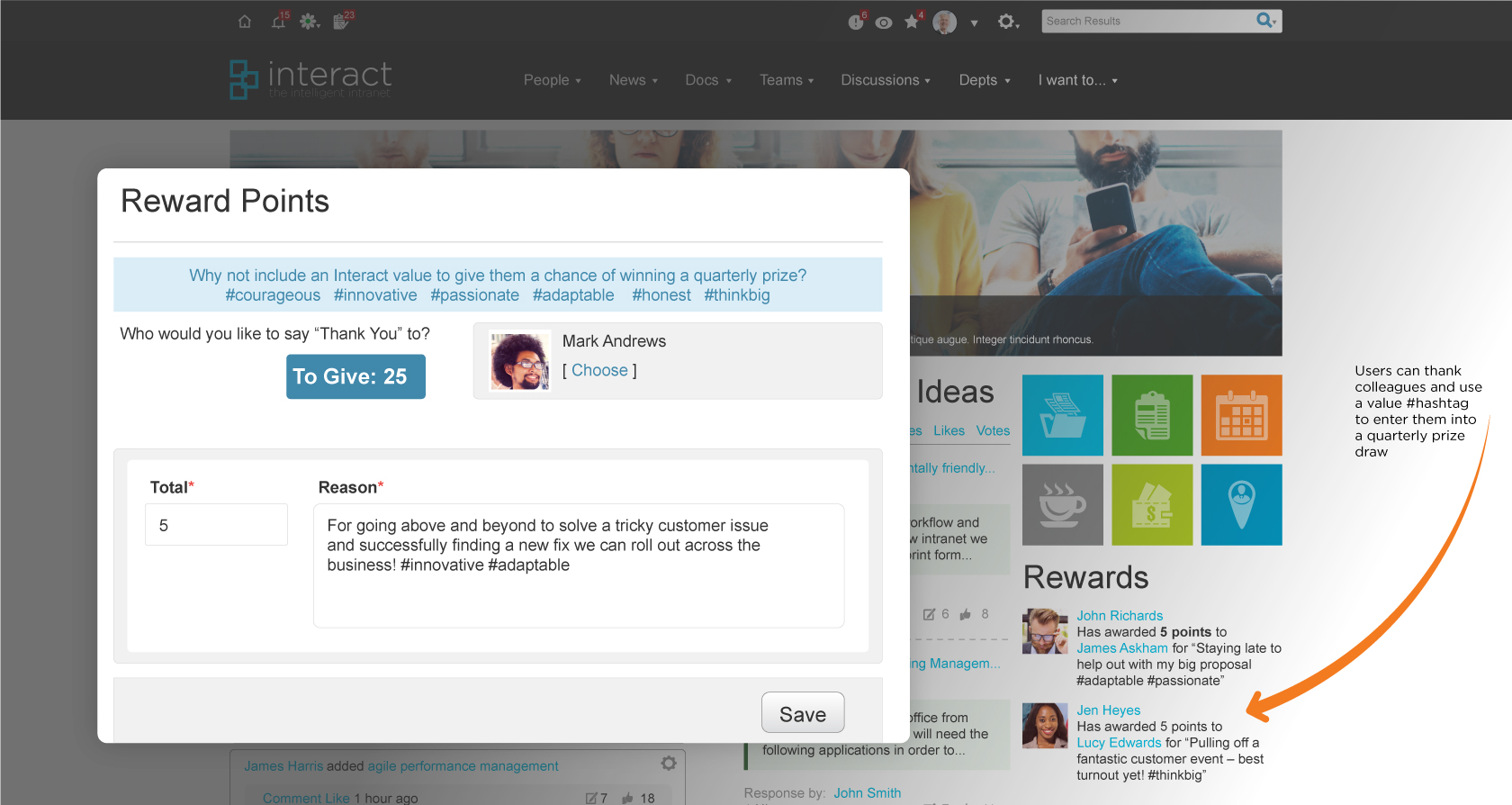10 Questions to Ask Yourself Before Rolling Out Organizational Change
Change. While it’s an essential – and constant – component of any organization, it is typically met with groans and complaints. Employees often prefer to continue in the rut they’ve carved out over time, and are reluctant to adopt new practices or accept transitions easily.
But your job is to facilitate that change management within your organization, and so you have to deal with the resistance you get from employees. Ideally you’d like it to be easy, but you’d settle for “not overly stressful.”
So how can you as a human resources professional roll out organizational change with the minimum disruption and pushback from your staff? Start by asking yourself these questions before diving into the transition.
1. What will the resistance be?
Brainstorming on what employees’ reactions will be ahead of time can help you mitigate these concerns when they arise. Naturally, most employees will be concerned about how this change will affect them, so be ready with answers. You don’t need to sugarcoat anything; if there are potential drawbacks to the change, be honest about them, but put greater emphasis on the benefits.
As best you can, line up counters to the main objections you see coming up so you can break past them as soon as you make your big announcement, and be ready to expound on why this change will be amazing for everyone involved.
2. Who will act as change champion?
Your job in rolling out this change will be much easier if you can enlist the aid of a few “change champions” across departments. These individuals support the change, understand why it needs to happen, and can help communicate that to other team members effectively.
Having these champions peppered throughout your organization will help you infiltrate every corner of the company, as these employees should be well-known and respected by their cohorts.
So how do you choose a champion? A manager might be an obvious choice, given their impact on workplace engagement and productivity. However, it’s not always the best one if they’re the one resistant to change or isn’t well-versed at fostering enthusiasm (not all managers are).
Instead, look for those who are actively involved in company politics or events, who you know are typically eager to help and participate. These are the ones with a greater presence on your internal communications channels: the bloggers, the brand advocates, the individuals who go ‘above and beyond’. Consider meeting with them individually before you announce the news to get them on board for a positive PR campaign. Empower them to answer questions or direct concerns back to you in HR.
3. Who will resist the most?
Depending on the size of your staff, you may know your employees well enough to be able to identify who the balkers will be. Just like your champions can influence others, so can these resistors, only not so positively. It’s imperative that you nip their negativity in the bud early on.
Direct your chosen champions toward those naysayers so they can channel their frustrations to them, rather than pepper-spraying a team with all the reasons they think this change means certain doom. Your champions can take on the challenge of showing them why change is good and necessary, and hopefully convert them to being more accepting of it. At the very least, this should mitigate the spreading of their resistance to the news any further.
Realize that your employees want to know “what’s in it for me.” It’s essential that you talk about the benefits immediately – not just for the organization but also for the individual.
4. What’s the best way to communicate this?
The largest component that will determine the success of your organizational change is how you communicate the news. The more detail you can provide, the less anxiety your staff will experience, and the fewer questions you will have to field.
Realize that communication will need to come on several fronts, from the intranet software platform you use for internal communications to in-person meetings and possibly to videos from your CEO explaining the upcoming change.
Honesty is, of course, the best policy. If your employees feel that you’re being completely open, they’ll be more accepting of the news and its implications. Hold back, and you carry the risk of your employees going external to the business to seek answers – or to vent their frustrations, placing huge risk to your company brand.
Your messaging should be detailed, but not overwhelming. Sending out waves of communication, rather than dumping it all in one giant email, will give employees time to process the information. Share the why, how, and what (referring to “what benefits this change will bring”) in your communication so your staff understands the purpose of this transition. Discuss deadlines and details that will help employees build their schedules around the transition.
And be available for questions! It’s frustrating for those affected by organizational change when they can’t get their concerns or questions addressed because the change spokesperson is too busy or nowhere to be found. Identify potential roadblocks for employee to communicate with managers and put in place alternatives, such as intranet-based Q&A forums. Consider appointing several people company-wide as change spokespeople to lessen your own load. The HR department is the natural choice, but department heads and champions should also be well-versed on the change so they can deal with their own staffs’ questions.
(Source: 15Five, ‘How important is communication to your (Millennial) employees?’)
5. Who should announce it?
The answer to this question will depend on your company culture, as well as the type of change you are announcing. Anything as large as a merger or acquisition is probably best coming from the CEO. Smaller changes, such as modifications to organizational structure, might be best communicated by department heads.
6. When should we release the news?
Timing is, of course, everything. First, you’ll want to have all the details of the change fleshed out, because announcing before everything is in place will cause upheaval and stress when your staff realizes that your plans are half-baked.
Second, you’ll want your executive team to be in the office when the change is announced. It’s important to communicate solidarity among managers and C-suite personnel, because other employees are paying attention to their behavior, and it will influence how they process this big news.
Finally, take into consideration what important project deadlines are looming, because some news may knock employees off of their productivity schedules, potentially putting your company at a disadvantage at a particularly vulnerable moment.
Certainly, there’s no ideal time for big announcements, but do your best to pay attention to schedules and deadlines to find the right moment.
7. Do we have a process in place?
Map out the steps and milestones that will need to happen to implement this change before announcing it. Ideally, set out a crisis or change communication framework that identifies the what, when, who and why. This not only gives you information to share with curious employees, but it also lines you up for success in the rollout itself.
Each phase will likely require certain employees’ involvement, so you’ll need to plan carefully to minimize disruption from their daily duties. Treat this like any other project and assign tasks to the appropriate leaders with deadlines, then stay tapped in to ensure that no roadblocks prevent key players from reaching milestones.
8. What obstacles might we encounter?
Beyond employees being resistant to change, can you predict any other obstacles for your organizational change rollout? Could it affect productivity? Scheduled product release dates? Relationships with existing clients?
Again, this is where looking at worst-case scenarios can actually pay off. By setting up solutions to potential roadblocks in advance, you’ll be prepared to deal with them if they actually come to fruition. If they don’t, so much the better.
9. How can employees support each other?
A successful change rollout relies on employees supporting one another through the transition. Consider setting up intranet forums for staff to share tips and ask questions, and get your change champions involved in managing these boards.
Encourage regular departmental meetings to address the processes and procedures that each is responsible for during the transition process, as well as to provide an in-person platform to discuss barriers and problems.
Don’t underestimate the power of employee appreciation during your organizational change. Staff may be insecure or worried about their jobs being taken away, so make a point of praising them as they work through these challenging times. Do your best to assure them that they are an integral component of the organization.

(Using an internal recognition program can prove invaluable for boosting morale and employee engagement during times of change. Interact’s intranet reward system introduces gamification into the process of employee appreciation, ensuring your staff feel recognized and rewarded for their efforts.)
10. Will we need training?
Again, depending on what the change is, training might be useful. If you’re implementing organization-wide Agile practices, for example, certainly your staff will need several training sessions to understand how to integrate these practices into their daily responsibilities. If you are acquiring another company, it’s likely that some employees’ roles will change, and they will need training on their new tasks.
It may be virtually impossible to make organizational change rollouts flawless and hassle-free, but if you spend the time developing a detailed plan for communicating and then implementing that change, you’ll almost certainly be more successful. The key is being open and honest about what’s coming down the pipeline, as well as how it will affect employees. There’s usually a silver lining for everyone involved, so make that the focal point of your communication.
Once you have announced the change, be supportive as your staff mentally processes it. Understand that tension will be high, and do your best to allay fears by answering questions and being positive.

